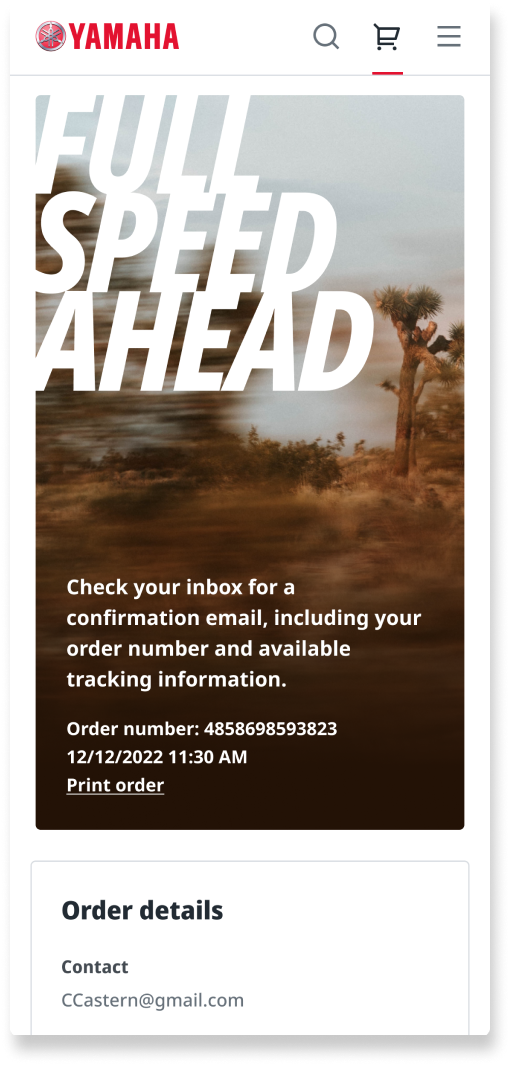Yamaha Motor Product Design + Delivery
Throughout the Yamaha ecosystem, individual Business Units historically had different data collection processes, sources, and infrastructure—resulting in a disjointed and confusing experience for users across Yamaha sites.
While the One Yamaha corporate mission was clear, there was a lack of unity and a need to define how individual Business Units operate within the One Yamaha digital ecosystem, while still maintaining their flexibility and individuality.
We were tasked with Modernizing how Yamaha engages with customers, dealers, distributors and partners—transitioning from a business-centric to a customer- centric digital experience.
The Ask
Design and implement a multi-year initiative to accelerate Yamaha's digital transformation across data departments, commerce functions, and the entire customer experience.
Launch a new eCommerce platform to drive performance across all channels and all business units in North America.
TIMELINE: 2+ YEARS

The Process Deep Dive
Empathize & Define
Throughout the Yamaha ecosystem, individual Business Units historically had different data collection processes, sources, and infrastructure—resulting in a disjointed and confusing experience for users across Yamaha sites.
After a thorough review of the legacy website, we found dozens of areas of opportunity. We set our sights on transitioning to a unified data infrastructure to allow for greater accuracy, improved efficiency, and the ability to take action. These adjustments would position Yamaha Motor to create a connected digital and physical experience to grow their market share and more deeply connect with their customers to rev their hearts.
Activities:
Heuristic Usability Audit
Technology Audit
Competitive Analysis
Usability Testing
Stakeholder Workshops
Roadmap Development
Concept & Design
We developed prototypes of experimental features and ideas to enhance the eCommerce experience, like the Owner’s Center and next generation Product Detail Pages. These concepts helped define priorities and inform design direction throughout the engagement. We tested them for user desire, feasibility, and business impact.
The design team crafted a net-new Design Language System, which laid the foundation for the experience. We developed digestible content and repetitive design patterns to inform and empower users to buy.
Activities:
Facilitated Cross-Disciplinary Product Visioning and Strategy Workshops
Service Blueprint Definition
Data Architecture
Information Architecture Design
Tree Testing
Design Language Development
Photography System and Governance Deffiniton
Agile Design Sprints
Develop & Iterate
Designers, developers and data scientists met regularly for sprint ceremonies, and dedicated collaboration sessions to ensure design intent was fully realized. Any backlogged user feedback was prioritized and addressed while simultaneously executing visual QA tasks.
Activities:
Visual QA
Backlog refinement
Iterative development of User Feedback
Deploy & Test
With the legacy experience unable to support end to end transactions, users browsed the site, but ultimately 69% abandoned their cart to complete their purchase elsewhere.
To combat the $260B in potential losses, we launched a new eCommerce platform to drive performance across all channels and all business units in North America. To ensure successful delivery, we conducted user testing within each design sprint and implemented feedback along the way.
Activities:
User Acceptance Testing
Customer Data Analytics
KPI Measurements
Survey Feedback
Design Team Training and Org Activation









Elevating
the Parts Catalogue
Impactful Results
-

35% Increase in Daily Users
-

10% Increase in Engagement
-

10% Decrease in Bounce Rate



